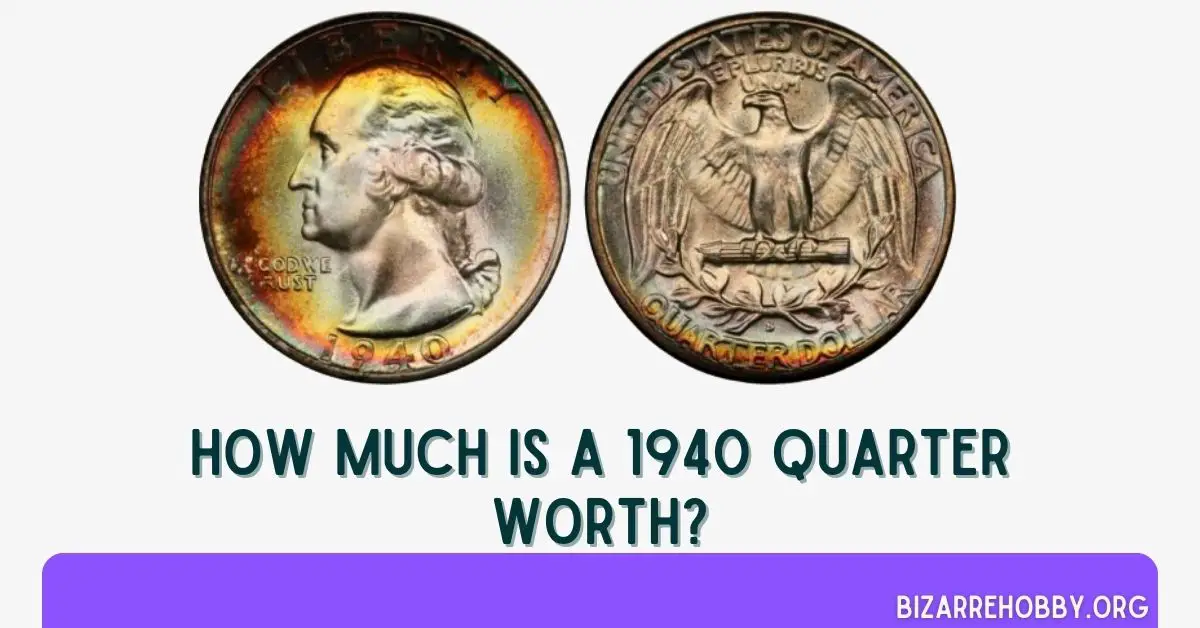The year 1940 marked the eighth anniversary of George Washington’s portrait gracing the obverse side of the quarter. Despite some of the 1940 quarter coins still being in circulation, their value typically exceeds their face value. The appeal of these coins to collectors stems primarily from their rich historical significance, but other factors such as appearance, brilliance, mint-related imperfections, and the wear sustained during circulation also play crucial roles in determining their worth.
Let’s delve into the fascinating world of these iconic 1940 quarter and their worth today.
1940 Quarter Value Chart
| Condition | 1940 no mint mark quarter | 1940 D quarter | 1940 S quarter |
|---|---|---|---|
| Good | $9.40 | $12 | $9.40 |
| Very good | $9.40 | $18 | $9.40 |
| Fine | $9.40 | $27 | $9.40 |
| Very fine | $11.40 | $32 | $12 |
| Extra fine | $14 | $45 | $16 |
| AU | $16 | $78 | $20 |
| MS 60 | $22 | $154 | $26 |
| MS 65 | $59 | $294 | $66 |
| PR 65 | $146 | – | – |
History Of The 1940 Washington Quarter
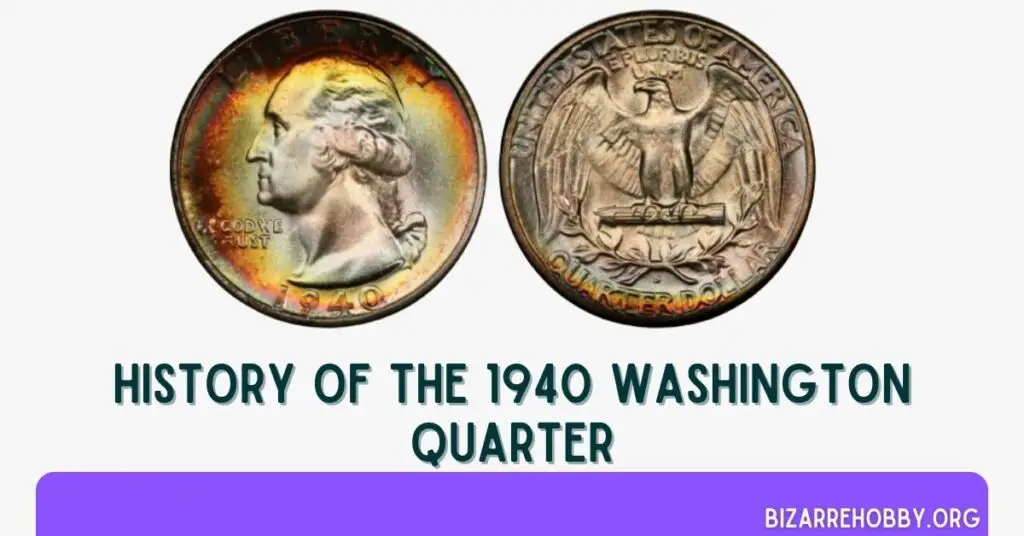
The Washington quarter made its debut on August 1, 1932, when the first silver 25-cent pieces entered circulation. This coin was introduced by the US Mint to commemorate the 200th anniversary of George Washington’s birth, effectively replacing the Standing Liberty quarter design.
Initially, Laura Gardin Fraser’s design was favored, but Treasury Secretary Andrew Mellon ultimately selected John Flanagan’s work. The reasons behind this decision remain a subject of debate, with some speculating that it may have been due to a reluctance to commission a female sculptor.
Interestingly, the decision to feature Washington on coinage went against his own beliefs. Washington had previously expressed concerns that depicting government officials on currency was reminiscent of colonial and imperial practices. However, it’s worth noting that his image had already been used on $1 bills since 1869.
The idea of honoring Washington on coinage actually originated in 1924. Despite his likely objections, many believed that featuring him on a coin aligned with democratic principles – a concept Washington himself championed.
1940 Washington Quarter Types
| Location | Year | Minted |
|---|---|---|
| Philadelphia | 1940 no mint mark quarter | 35,704,000 |
| San Francisco | 1940 S quarter | 8,244,000 |
| Denver | 1940 D quarter | 2,797,600 |
| Philadelphia | 1940 proof quarter | 11,246 |
| Total | – | 46,756,846 |
Features Of The 1940 Washington Quarter
John Flanagan’s design, which won favor with the Treasury authorities, gives the 1940 Washington quarter its distinctive appearance.
Obverse Design Of The 1940 Washington Quarter
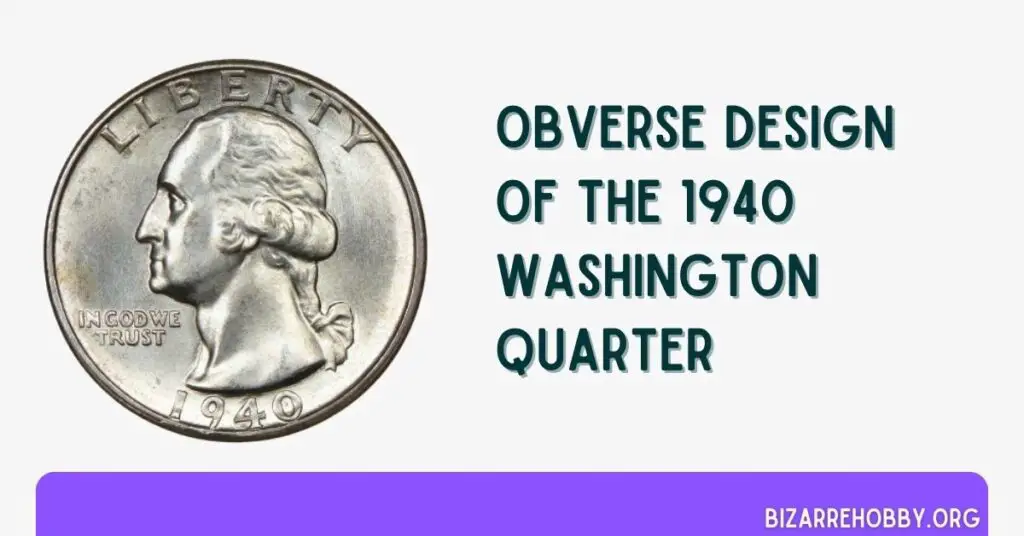
The obverse of 1940 quarter features a left-facing profile of George Washington, portraying him with a solemn expression, period-appropriate hairstyle, and a piercing gaze. The motto “IN GOD WE TRUST” is inscribed in front of his neck, while the year of minting appears below. The word “LIBERTY” is prominently displayed above Washington’s head, and Flanagan’s initials are discreetly engraved on the neck truncation.
Reverse Design Of The 1940 Washington Quarter
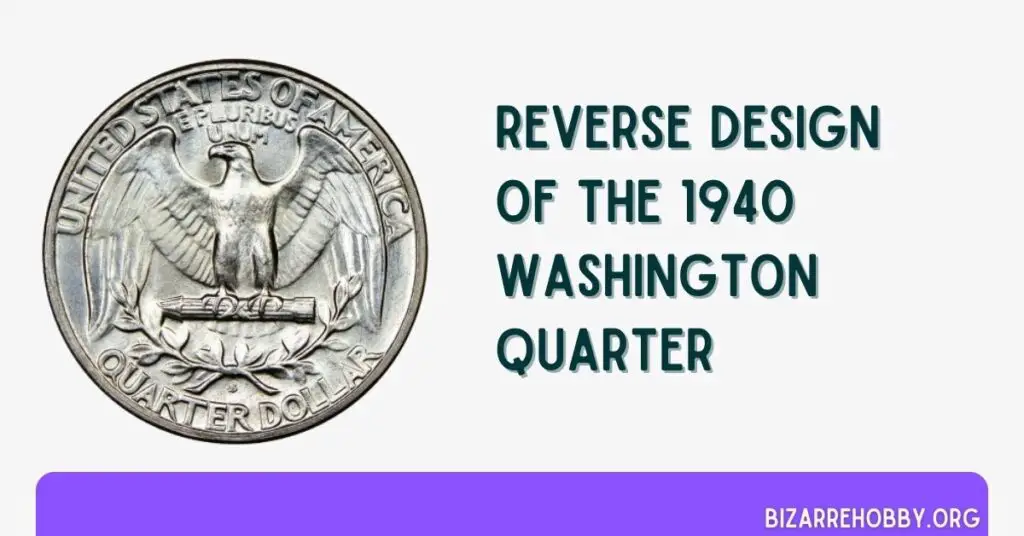
The reverse side showcases an eagle with outstretched wings, perched atop a bundle of arrows and flanked by two olive branches. This imagery symbolizes America’s readiness for conflict (arrows) balanced with its desire for peace (olive branches). The inscriptions include “UNITED STATES OF AMERICA,” “E PLURIBUS UNUM,” and “ONE QUARTER.” 1940 quarter coins minted outside Philadelphia bear a mint mark between the denomination and the junction of the olive branches.
1940 Washington Quarter Specifications
| Face value | Twenty-five cents ($0.25) |
| Shape | Round |
| Compound | Silver coin with added 10% copper |
| Coin thickness | 1.75 mm (0.06870 inches) |
| Coin diameter | 24.3 mm (0.95669 inches) |
| Coin weight | 6.25 g (0.20094 troy ounces) |
| Silver weight | 5.623 g (0.1808 troy ounces) |
| Edge | Reeded |
Other Specifications Of The 1940 Washington Quarters
The 1940 Washington quarters were minted as Europe was entering World War II. These silver coins featured 119 reeds along the edge and measured 1.75 mm in thickness. Composed of 90% silver, each coin contained 5.623 g of the precious metal. The total weight of each quarter was 6.25 g, with a diameter of 24.3 mm.
1940 Washington Quarter Grading
The value of a 1940 quarter increases with its condition, with uncirculated or “mint state” coins commanding the highest prices. Conversely, coins graded as “GOOD” – the lowest collectible grade – are the least expensive. Coins below this grade are generally not considered collectible.
For the most accurate valuation of a potentially high-value 1940 quarter, it’s advisable to have it assessed by a reputable grading company. Familiarizing yourself with grading guides is an essential step in understanding your coin’s value. This knowledge will help you appreciate the nuances that differentiate a common circulated coin from a valuable numismatic treasure.
| Grade Number | Grade |
|---|---|
| 1 | Basal State-1 |
| 2 | Fair |
| 3 | Very Fair |
| 4, 5, 6 | Good |
| 7, 8, 10 | Very Good |
| 12, 15 | Fine |
| 20, 30 | Very Fine |
| 40 | Extremely Fine |
| 50 | About Uncirculated |
| 60 | Mint State |
| 65 | Mint State |
| 70 | Mint State |
1940 Washington Quarter Value Guides
The year 1940 saw a total production of 46,756,846 quarters, distributed across three mints. In addition to the regular coins and proofs minted in Philadelphia without a mint mark, you can find quarters bearing either an S or D letter beneath the wreath, indicating their origin from one of the smaller mints.
1940 No Mint Mark Quarter Value
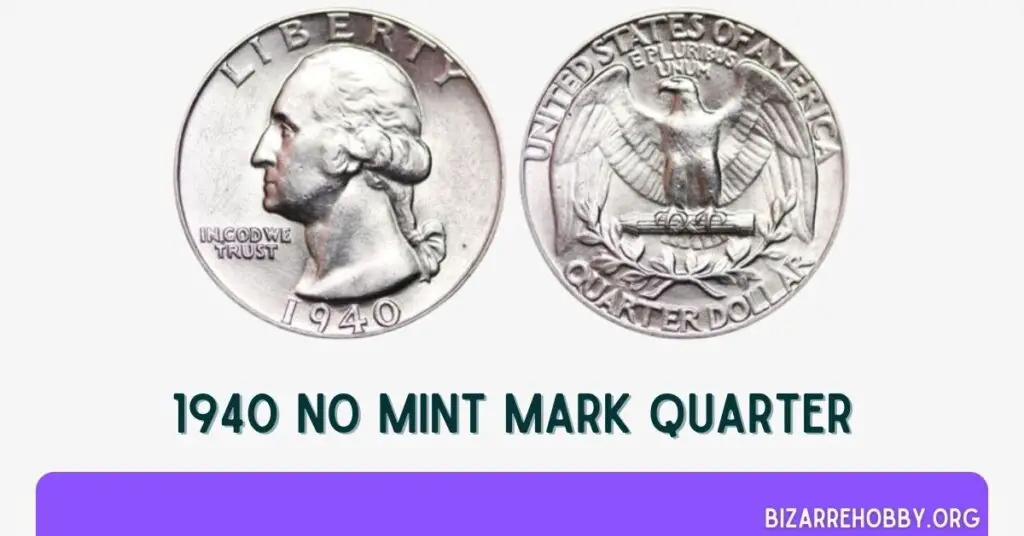
The 1940 quarters are sought-after collectibles, commanding respectable prices even in lower collectible grades. Circulated specimens typically fetch between $9.40 and $16. Uncirculated pieces range from $20 to $260, depending on their condition.
For exceptional specimens graded MS 68, prices soar dramatically, reaching $5,760 to $8,750 at auctions. This significant value increase is due to the scarcity of perfectly preserved quarters, despite the substantial mintage of 35,704,000 pieces.
A particularly noteworthy sale occurred in 2013 when an enthusiastic collector acquired a 1940 MS 68 Washington CAC quarter for an impressive $19,975 at a Heritage Auctions event.
1940 Proof Washington Quarter Value
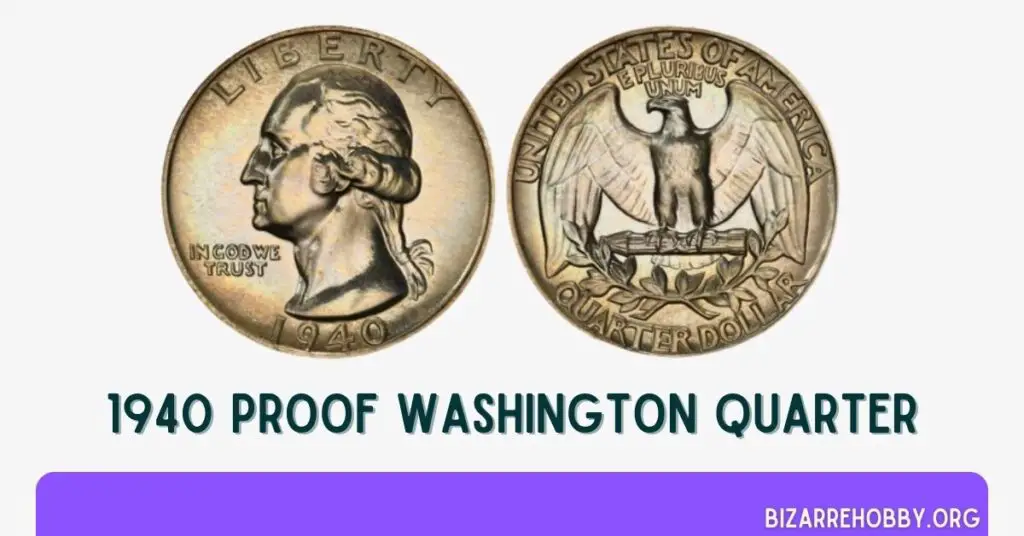
The 1940 proof quarters are considered relatively rare, with only 11,246 pieces produced that year. However, many have been well-preserved and are available in various grades.
Their value spans a wide range. Quarters graded from PR 60 to PR 65 typically sell for $60 to $150, while higher-grade pieces (PR 66 and PR 67) command $165 to $400.
The estimated price for a 1940 PR 68 quarter is between $3,800 and $5,000. However, one exceptional specimen sold for $8,625 on September 1, 2008, demonstrating the premium that collectors are willing to pay for top-quality pieces.
1940 D Quarter Value
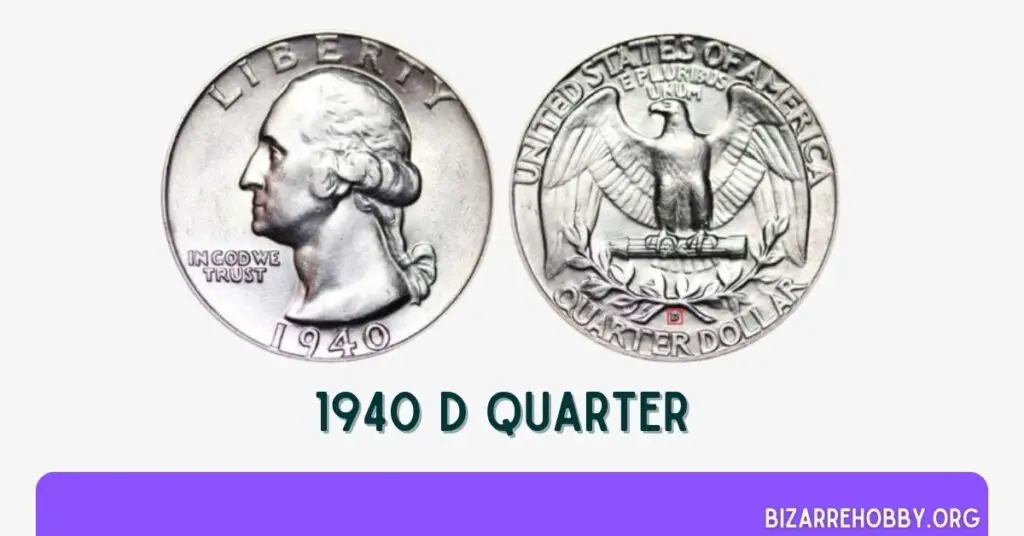
The Denver mint produced the lowest number of quarters in 1940, with a mintage of 2,797,600. These coins are identifiable by the D letter below the wreath on the reverse side.
Despite their lower mintage, these coins are still available in the current market but command prices well above their face value. Circulated 1940 D Washington quarters in lower grades range from $8 to $54, while those in About Uncirculated (AU) condition fetch approximately $67 to $78.
Uncirculated specimens vary widely in price based on their condition. Coins graded MS 60 to MS 66 typically sell for $140 to $450, while the finest examples graded MS 67 can reach $550 to $750.
A particularly remarkable sale occurred in 2022 when a 1940 D quarter graded MS 68 sold for an astonishing $17,500 on eBay, underscoring the premium placed on exceptionally preserved specimens.
1940 S Quarter Value
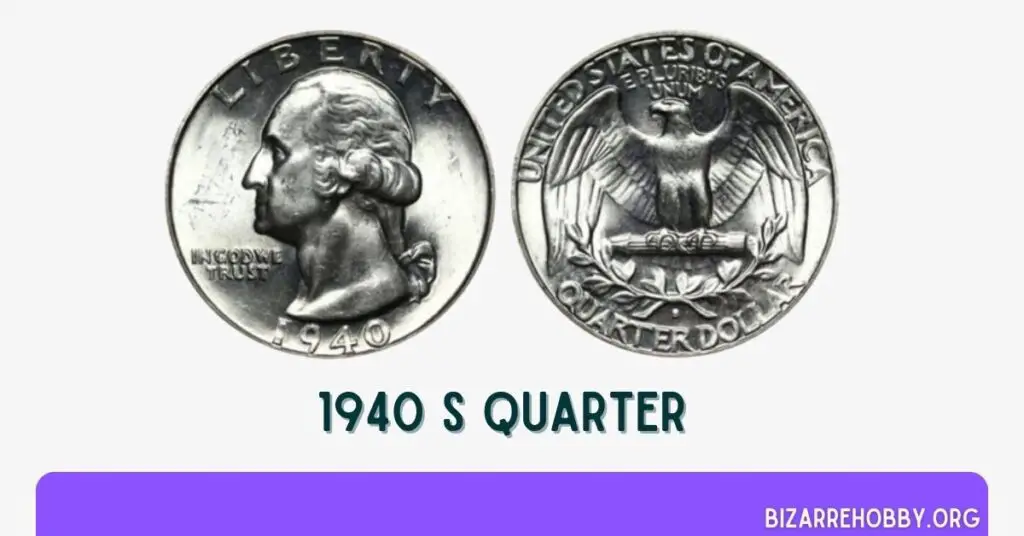
The San Francisco mint struck 8,244,000 quarters in 1940, many of which have survived in various conditions. As with all coins, their value is closely tied to their state of preservation.
Circulated specimens typically sell for around $9.40 to $20. Mint state coins are relatively affordable, especially those in lower uncirculated grades. Collectors should expect to pay between $26 and $450 for these pieces, depending on their condition.
At the pinnacle of preservation, 1940 S quarters graded MS 68 have estimated values ranging from $8,000 to $13,000. The current auction record for this issue stands at $10,200, achieved at a Stack’s Bowers auction in 2021.
These value guides illustrate the significant premium placed on condition in the numismatic market, with even small differences in preservation potentially resulting in substantial price variations. As always, potential buyers and sellers should consult current market trends and reputable dealers for the most up-to-date valuations.
Rare 1940 Washington Quarter Errors List
The 1940 Washington quarters, minted at the onset of World War II, exhibit various striking imperfections. These atypical specimens are available in the market, with their values contingent upon preservation state and rarity.
Doubled Die Obverse
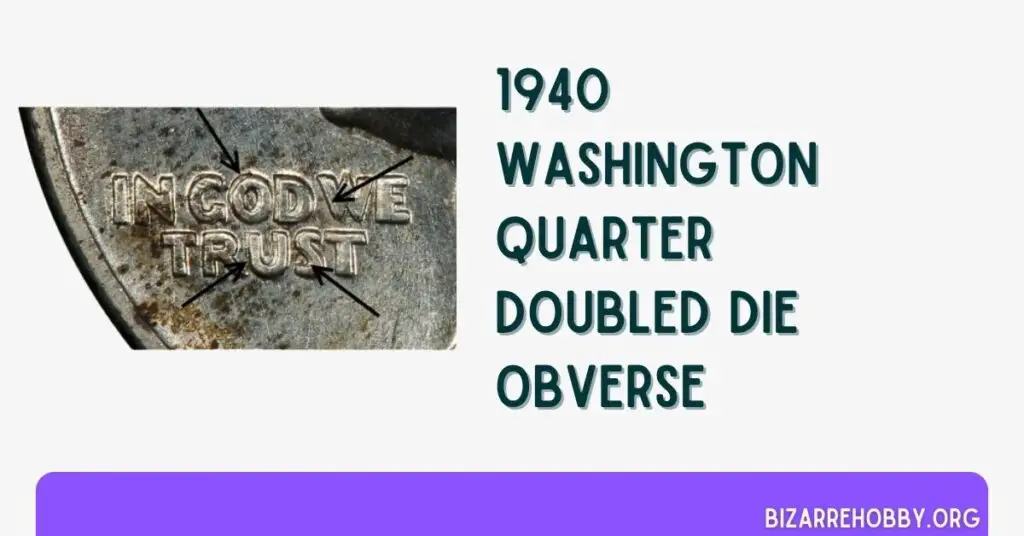
Doubled Die Obverse (DDO) errors can be found on quarters from all three mints that produced coins in 1940. This error results from an imperfect die, causing doubling on the design, particularly noticeable on lettering and the date.
These error coins typically fetch between $70 and $800, with more pronounced doubling generally commanding higher prices. The most valuable example of this error is a 1940 D MS 66 quarter, which sold for an impressive $2,880 at a Heritage Auctions event on February 22, 2018.
Re-Punched Mint Mark
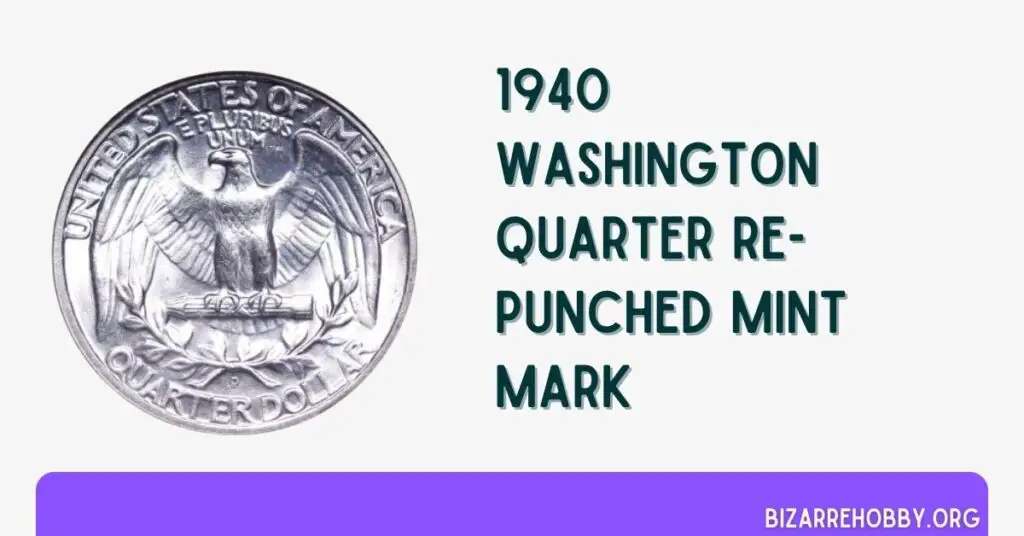
1940 Washington quarters with re-punched mint mark errors are valued between $20 and $400, depending on the coin’s condition and the nature of the doubling.
This error occurs when the mint mark is struck twice, either due to an unsuccessful first attempt or the letter being struck at an incorrect angle or position.
The error was particularly prominent on coins produced at the Denver mint. This prominence likely contributed to the high auction price achieved by one such coin in 2015, when a collector paid $2,585 for a quarter graded MS 66.
Lamination
Lamination errors stem from imperfections in the planchet – the metal disc used to strike coins. For 1940 quarters, these planchets were composed of 90% silver and 10% copper.
Sometimes, due to improper metal layering or the presence of impurities, the coin’s surface may crack or flake off after striking. A few such quarters produced in Philadelphia have been found, with an average market value of around $75.
These error coins offer an intriguing subset of numismatics, appealing to collectors interested in the minting process and its occasional imperfections. The rarity and visibility of these errors significantly impact their value, with some commanding substantial premiums over standard issues.
It’s worth noting that while these errors can be valuable, they should be authenticated by reputable experts or grading services. The numismatic market for error coins can be complex, and proper identification is crucial for accurate valuation.
Collectors interested in these error coins should educate themselves about the specific characteristics of each error type. This knowledge not only aids in identifying genuine errors but also enhances appreciation for the intricacies of the minting process.
As with all aspects of coin collecting, market values for these error coins can fluctuate based on supply, demand, and overall market conditions. Therefore, it’s advisable to consult current price guides and recent auction results when assessing the value of any particular error coin.
Where To Sell Your 1940 Washington Quarter?
When it comes to selling your 1940 Washington quarters, you have several options depending on the coin’s condition and your preferences. Local coin shops can offer immediate cash, while coin shows provide opportunities to meet collectors directly. For potentially higher returns, consider online marketplaces or auction houses specializing in numismatics.
For a comprehensive overview of digital selling platforms, we recommend referring to our guide on the “Best Places to Sell Coins Online.” This resource provides detailed information on popular websites, auction houses, and online communities where you can connect with coin enthusiasts and buyers worldwide.
Remember, before selling, it’s crucial to have your coins accurately graded, especially if you believe you have a high-grade or error specimen. This step can significantly impact the value and attractiveness of your coins to potential buyers.
What Is The Most Expensive Washington Quarter?
The Washington Quarter series has produced some remarkably valuable coins over the years, with certain specimens fetching impressive prices at auction. Let’s break down the most expensive examples across different categories:
Regular Coins Type 1 (Silver)
- The crown jewel of Washington Quarters is the 1932 D MS66, which commanded an astounding $143,750. This coin’s exceptional value stems from its high grade and the fact that 1932 was the first year of Washington Quarter production, with relatively low mintages from branch mints.
- Following closely is the 1932 S MS66, which sold for $45,500. Like its Denver counterpart, this San Francisco issue benefits from first-year status and scarcity in high grades.
- The 1949 D MS68 achieved $43,475, showcasing how even later dates can become extremely valuable in top-tier conditions.
Regular Coins Type 2 (Clad)
- Leading the clad composition quarters is a 1966 MS68+ example, realizing $21,000. This high price for a relatively common date underscores the premium commanded by virtually perfect specimens.
- An unusually high-grade 1983 P MS65 sold for $15,862.50, demonstrating how condition rarity can elevate even modern issues.
- The 1970 D MS69 reached $15,000, again highlighting the value placed on near-flawless examples of clad quarters.
Proofs Type 1 (Silver)
- Among silver proofs, a 1950 PR68 specimen leads the pack at $31,200, likely due to its exceptional preservation and eye appeal.
- A 1937 PR68 achieved $18,400, showing the premium for early proof issues in top grades.
- The 1942 PR69 sold for $16,800, approaching perfection for a World War II-era proof.
Proofs Type 2 (Clad)
- In the realm of clad proofs, a 1974 S PR70 (perfect grade) example reached $10,925, demonstrating the value of flawless modern proofs.
- Surprisingly, a 1998 S PR65 sold for $9,987.50. This relatively low grade for a modern proof suggests there may be special circumstances or varieties involved.
- A 1971 S PR69 realized $7,475, again showing the premium for near-perfect examples.
FAQs on 1940 Washington Quarter
Which 1940 Washington Quarter Is Worth A Lot Of Money?
The most valuable 1940 Washington Quarters are those in exceptional condition (MS 68) or with significant errors. The highest recorded sale was a 1940 MS 68 Washington CAC quarter, which sold for $19,975 at Heritage Auctions in 2013. Other high-value examples include the 1940 D MS 68 ($17,500), 1940 S MS 68 ($10,200), and error coins like the 1940 D MS 66 DDO ($2,880).
How Much Is The Philadelphia 1940 Washington Quarter Worth?
The Philadelphia 1940 Washington Quarter’s value varies based on condition. Circulated coins typically range from $9.40 to $16. Uncirculated pieces generally fetch $20 to $260. However, exceptionally preserved MS 68 grade quarters can command $5,760 to $8,750, with a record auction price of $19,975 for a top-quality specimen.
